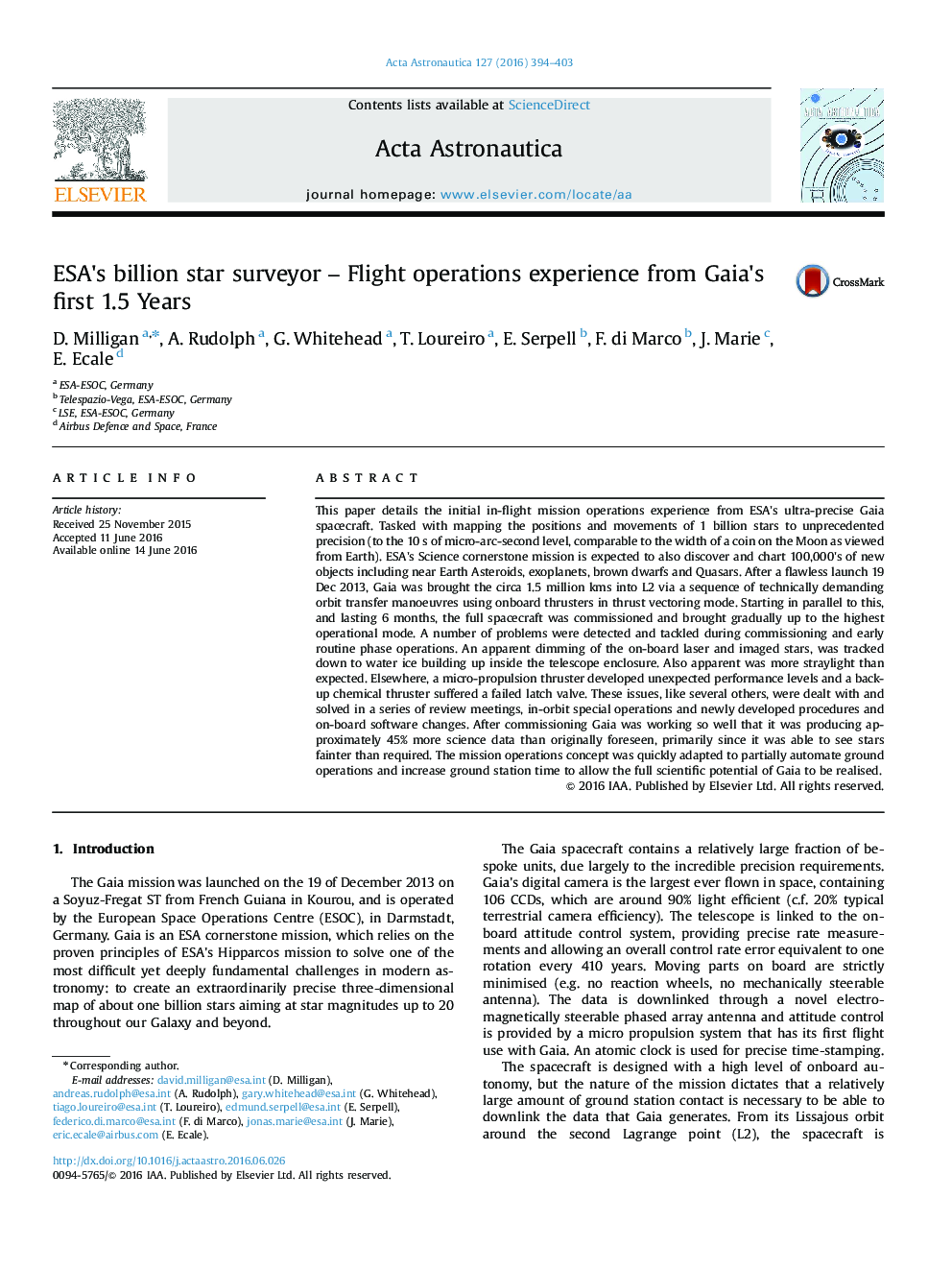| Article ID | Journal | Published Year | Pages | File Type |
|---|---|---|---|---|
| 8056042 | Acta Astronautica | 2016 | 10 Pages |
Abstract
This paper details the initial in-flight mission operations experience from ESA's ultra-precise Gaia spacecraft. Tasked with mapping the positions and movements of 1 billion stars to unprecedented precision (to the 10Â s of micro-arc-second level, comparable to the width of a coin on the Moon as viewed from Earth). ESA's Science cornerstone mission is expected to also discover and chart 100,000's of new objects including near Earth Asteroids, exoplanets, brown dwarfs and Quasars. After a flawless launch 19 Dec 2013, Gaia was brought the circa 1.5 million kms into L2 via a sequence of technically demanding orbit transfer manoeuvres using onboard thrusters in thrust vectoring mode. Starting in parallel to this, and lasting 6 months, the full spacecraft was commissioned and brought gradually up to the highest operational mode. A number of problems were detected and tackled during commissioning and early routine phase operations. An apparent dimming of the on-board laser and imaged stars, was tracked down to water ice building up inside the telescope enclosure. Also apparent was more straylight than expected. Elsewhere, a micro-propulsion thruster developed unexpected performance levels and a back-up chemical thruster suffered a failed latch valve. These issues, like several others, were dealt with and solved in a series of review meetings, in-orbit special operations and newly developed procedures and on-board software changes. After commissioning Gaia was working so well that it was producing approximately 45% more science data than originally foreseen, primarily since it was able to see stars fainter than required. The mission operations concept was quickly adapted to partially automate ground operations and increase ground station time to allow the full scientific potential of Gaia to be realised.
Related Topics
Physical Sciences and Engineering
Engineering
Aerospace Engineering
Authors
D. Milligan, A. Rudolph, G. Whitehead, T. Loureiro, E. Serpell, F. di Marco, J. Marie, E. Ecale,
